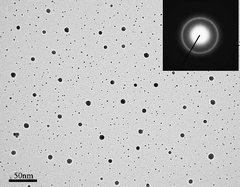Preparation and dielectric properties of (Ca0.61,Nd0.26)TiO3nanoparticles by a sol–gel method
Abstract
Ultrafine (Ca0.61,Nd0.26)TiO3 powder was synthesized by a sol–gel method. The

* Corresponding authors
a
College of Materials Science and Chemical Engineering, Zhejiang University, Hangzhou, China
E-mail:
mse237@zju.edu.cn
Fax: +86 571 87953313
Tel: +86 571 87953313
Ultrafine (Ca0.61,Nd0.26)TiO3 powder was synthesized by a sol–gel method. The

 Please wait while we load your content...
Something went wrong. Try again?
Please wait while we load your content...
Something went wrong. Try again?
Q. Zhang, F. Wu, H. Yang and D. Zou, J. Mater. Chem., 2008, 18, 5339 DOI: 10.1039/B811405F
To request permission to reproduce material from this article, please go to the Copyright Clearance Center request page.
If you are an author contributing to an RSC publication, you do not need to request permission provided correct acknowledgement is given.
If you are the author of this article, you do not need to request permission to reproduce figures and diagrams provided correct acknowledgement is given. If you want to reproduce the whole article in a third-party publication (excluding your thesis/dissertation for which permission is not required) please go to the Copyright Clearance Center request page.
Read more about how to correctly acknowledge RSC content.
 Fetching data from CrossRef.
Fetching data from CrossRef.
This may take some time to load.
Loading related content
